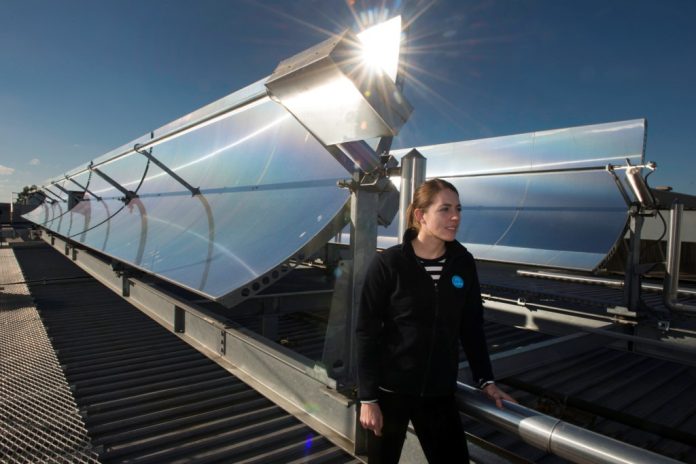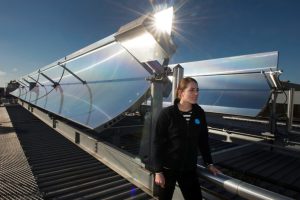
CSIRO has developed an innovative solar-powered air-conditioning system that addresses the high energy consumption of large commercial spaces such as shopping centres and hotels.

The new system, which operates at Stockland Wendouree Shopping Centre in Ballarat, Victoria, uses concentrating solar thermal technology to produce heat energy that is then used to power the air conditioning system of the shopping centre.
Jointly managed by CSIRO with Stockland Group and NEP Solar, the $1.2 million, three-year pilot project is also supported by the Australian Renewable Energy Agency (ARENA) with $520,000 in funding.
CSIRO Energy Director Peter Mayfield said the technology showed promising early results.
“CSIRO’s energy research is driving down costs of renewable technologies, accelerating the transition to a lower-emissions future,” Dr Mayfield said.
“We are pioneering new technologies and this project is a world-first demonstration of a desiccant air-conditioning system using roof mounted concentrating solar thermal collectors.”
ARENA CEO Ivor Frischknecht said ARENA was very pleased to have partnered with CSIRO on this technology.
“It has the potential to further improve the efficiency of solar thermal energy systems and storage to provide clean and reliable heating and cooling in commercial buildings,” Mr Frischknecht said.
“ARENA is committed to supporting innovative projects like this and helping to share lessons learned amongst the wider RD&D sector, powering Australian renewable energy innovation well into the future.”
CSIRO said that the air conditioning system is powered by NEP Solar’s trough collectors with heat stored in a thermal oil tank.
“The roof space required for the solar air-conditioning technology can be 40 per cent less than a traditional single-stage desiccant system,” it says in the press release.
“Solar heat-driven desiccant air conditioning systems can provide humidity controlled fresh air into the buildings and is expected to significantly reduce HVAC electricity usage for commercial buildings.”
CSIRO said it will continue to monitor the operation pilot system over the next 12 months to establish the long-term commercial viability of the design.




















